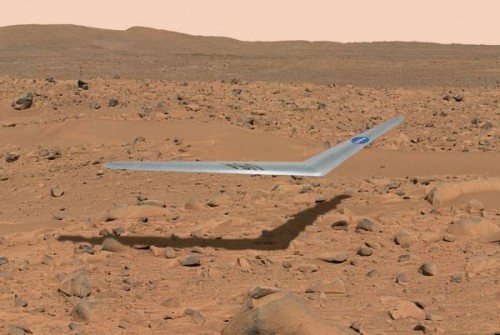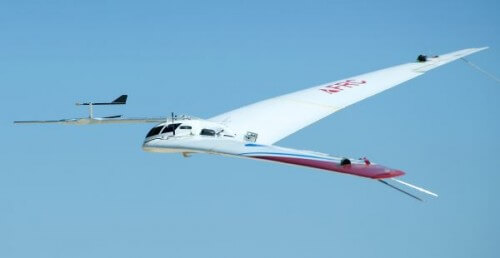The Mars plane will be able to scan the surface in preparation for establishing a manned base on the red planet

The American space agency begins the test flights of its new space plane - Prandtl-m, which is planned to fly over the planet Mars. The unmanned aircraft is supposed to operate, as we know, in atmospheric conditions completely different from those of Earth, and of course in the absence of air, and its goal is to conduct experiments in the neighboring planet's atmosphere in preparation for the landing of humans in about 2020. Among other things, he will locate the optimal location for the human base that will be established there. The plane will be flown to Mars in a spacecraft, will be folded inside a capsule, and will be deployed when it reaches above the planet.
The "Mars plane" is adapted to thin air and low gravity
This is a flying wing, which will soon enter into a program of real test flights that will include a launch from an altitude of 100,000 feet - where there are conditions reminiscent of the atmosphere of Mars (such as those used for the failed experiments of the "flying saucers" simulating systems for landing humans on Mars AB). The plane is supposed to fly, hover and land on the planet, but not on long flights: it will fly for about 10 minutes, for a distance of about 20 miles. The plane will have features that will allow it to fly in conditions of a gravity of only 38% of that of the Earth, and will be made of composite materials headed by fiberglass and carbon. On Earth, the plane will have GPS, but since Mars does not have GPS, they will have to find another solution to the issue of navigation.
This model is One of ten models of airplanes and landers designed over the years to fly on Mars. It should be noted that in the drawer there are also plans to launch spacecraft to other planets and moons with atmospheres.
In the same topic on the science website:


3 תגובות
It's nothing
10 minutes flight!?
I don't understand a picture